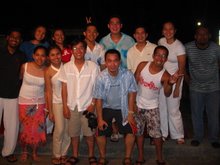ALIAS PUFFER
Sabi netong si Besfren Jourds mukha na daw akong puffer fish (?). Meron ba talagang puffer fish? Di ba blowfish yun? Hehe. Pero since he is the self-confessed-mr-know-it-all-pero-ginagalang-kong-tropa, e I believed na din pero onti lang. As expected, kinabukasan he went to my office, of course, alam ko na na iduduldol na naman nya si MR. puffer fish so nagre-search na 'ko beforehand (hehehe). Tama ang loko! So here is the thing that I read about the infamous PUFFER FISH.
Sana me spine din ako para lahat ng taong pasaway e mig tig i tig isang tusok...
Puffer fish or more scientifcally known as Tetraodontidae is a family of primarily marine and estuarine fish. The family includes many familiar species which are variously called puffers, balloonfish, blowfish, bubblefish, globefish, swellfish, toadfish, and toadies. Tama rin pala ako! The fish is highly toxic though in some parts of Asia, this is widely eaten as fugu (in Japan) and as boh-guh (in Korea).The puffer fish's poison is called Tetrodotoxin, and is one of the most violent poisons found in nature. If the fish has not been prepared correctly with all of its poison removed, the toxins kill the nerve tissue inside the person's body, paralyzing the muscles necessary to breath causing death within about 4 to 6 hours from ingesting. The most poisonous part of the puffer fish is the liver, which is completely removed during preparation.
"The poisonous power of one puffer fish is capable of killing 30 adults"
In Japan, Fugu also has exceptional nutritional value, rich in glutamic acid, inosinic acid and taurine, which makes up the base of the taste. Fugu is high in protein, low in calories and also has a lot of collagen which is important for beautiful skin, making it a real favourite with women.There are around 40 different types of puffer fish, however only 22 of them are deemed by the Japanese government as fit for human consumption. Japan hauls around 1000 tones of Fugu every year between September and March, and it is sold wholesale for about £75 to £200 a kilo and about £50 to £250 per person in a specialized puffer fish restaurant.
You might be asking yourself why exactly would anyone take such a risk in eating Fugu. Well, first of all if the fish is prepared correctly by a licensed restaurant who have staff that have been trained to remove the toxic parts of the fish, there is no risk of actually dying. Secondly, the taste of Fugu is absolutely amazing, with it's subtle and elegant characteristic flavour.
parang yutak...tsalap...malaman laman
In a typical Fugu set menu, the fish is prepared and served in 3 different ways, which are as follows:
Fugu-sashi - Thinly sliced raw flesh and skin.
The raw flesh and skin of the fish is thinly sliced, almost translucent, and has an elastic texture and is slightly chewy to eat. This is regarded as one of the most beautiful types of sashimi, and is served with a sour citrus sauce, chives and grated white radish.
Fugu-chiri - Hot-pot style with vegetables
The fish is cut into pieces and cooked at the table in boiling water with tofu, vegetables (mushrooms, Chinese cabbage, carrot and chrysanthemum leaves), and seaweed. It is cooked for a few minutes then served with a sour citrus sauce, chives and red pepper.
Fugu-zousui - Mixed with rice and eggs
After finishing the Fugi-chiri, salt, rice and egg is added to the rich hot-pot to make a porridge style rice, which is a warm and satisfying way to end the Fugu meal. Fugu is definitely worth the money if you get the chance to eat it, and is best eaten in the winter when it is at its most flavourful. The best place to eat Fugu is Fukuoka Shimonoseki in Japan.










1 comment:
...please where can I buy a unicorn?
Post a Comment